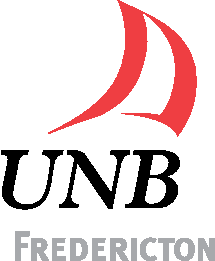Réunion d'ete SMC 2018
Fredericton, 1 - 4 juin 2018
Conférences plénières
[PDF]
[PDF]
- JASON BELL, University of Waterloo
Growth of groups and algebras [PDF]
-
The growth of a group or algebra is an invariant that provides a measure of how large or "complex" the algebra is. We give a brief survey of growth and Gelfand-Kirillov dimension, highlighting some of the major advances in this area. We then look at the question of what types of growth are possible for groups and algebras. In the case of algebras, one can give an exact characterization of the types of growth that can occur. This is joint work with E. Zelmanov.
- LIA BRONSARD, McMaster University
On Saturn-ring defects in a nematic liquid crystal / Sur les défauts du type “anneau de Saturne" des cristaux liquides nématiques [PDF]
-
We consider energy minimizing configurations of a nematic liquid crystal, as described by the Landau-de Gennes model. We focus on an important model problem concerning a nematic surrounding a spherical colloid particle, with normal anchoring at the surface. For topological reasons, the nematic director must exhibit a defect (singularity), which may take the form of a point or line defect. We consider two physical regimes in which “Saturn-ring” configurations will be energetically favorable: the case of colloids of small radius, and the case of strong applied magnetic fields. This is joint work with S. Alama and X. Lamy.
- NASSIF GHOUSSOUB, University of British Columbia
A Theory of Transfers [PDF]
-
I will introduce the class of ``linear transfers'' between probability measures. This class contains all cost minimizing mass transports, including ``martingale mass transports''. It also contain the "Schrodinger bridge'' associated to a reversible Markov process, and the ``weak mass transports'' of Talagrand, Marton, Gozlan and others. However, what motivated us to develop the concept are the stochastic mass transports in their various forms. We also introduce the cone of ``convex transfers,'' which in addition to linear transfers, include any p-power of a linear transfer, but also the logarithmic entropy, other correlations functionals, as well as the Donsker-Varadhan information. The ultimate goal: Stochastic Weak KAM theory.
- ALLEN KNUTSON, Cornell University
Schubert calculus and scattering diagrams [PDF]
-
How many lines in space pass through four, given, generic lines?''
(answer: two) is a counting problem admitting many generalizations, to
chains of subspaces, isotropic or Lagrangian subspaces; or, beyond counting
to answers living in exotic cohomology theories ($K$, equivariant, quantum).
In all these cases we have alternating-sum formulae for the manifestly
nonnegative answers, admitting much computer experimentation in the
search for manifesly nonnegative formulae. I'll review the history,
and talk about recent work (joint with Paul Zinn-Justin) that uses
input from quantum integrable systems to give positive answers to more
of these questions. Quiver varieties, cluster varieties, $E_8$, and
triality will all make appearances.
- MARK LEWIS, University of Alberta
Genetic consequences of range expansion under climate change [PDF]
-
Range expansion is a crucial population response to climate change. Genetic consequences are coupled to ecological dynamics that, in turn, are driven by shifting climate conditions. We model a population with a reaction–diffusion system, coupled to a heterogeneous environment that shifts with time due to climate change. We decompose the resulting traveling wave solution into neutral genetic components to analyze the spatio-temporal dynamics of its genetic structure. Our analysis shows that range expansion under slow climate change preserves genetic diversity. However, diversity is diminished when climate change occurs too quickly. We show that populations with intermediate dispersal ability are best for maintaining genetic diversity. Our study also provides new insight regarding traveling wave solutions in heterogeneous environments. This is joint with Jimmy Garnier (CNRS).
- CARL POMERANCE, Dartmouth College
Random Number Theory [PDF]
-
No, this is not a talk about random numbers! Rather, we discuss
the role of randomness in number theory, from Euler to the present.
We'll visit the proababilistic
background of Fermat's Last Theorem, the ABC conjecture, the
Prime Number Theorem, the Riemann Hypothesis, Goldbach's Conjecture,
and the Twin-Prime Conjecture, among other famous
problems and results. We'll also discuss the influence of randomness
in computational number theory. In combinatorial number theory,
the Probabilistic Method (best known in graph theory and combinatorics)
is used to prove the existence of strange structures. In algebraic
number theory the probability-based Cohen--Lenstra heuristics
lead us to conjectures (and theorems too)
about the distribution of algebraic number fields. We close with
the famous Covering Congruences problem of Paul Erd\H os, which was
recently settled with probabilistic tools.





